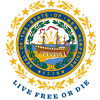Infectious Disease Surveillance
Public Health Surveillance is watching and studying information collected about diseases active in a specific population. This helps health care professionals to reduce the impact of the disease and improve health.
Statistics and Reports
Disease Surveillance
Public health data can be used in a variety of ways for the prevention and control of disease. This data can be used to monitor the health of the community and to detect public health events such as a bioterrorism event, pandemic influenza, or a local outbreak of disease. The NH Bureau of Infectious Disease Control maintains a number of surveillance systems to monitor the health of NH citizens.
This program:
- Watches and responds to diseases in a community.
- Collects and studies information about more than 50 diseases that, by law, must be reported to public health.
- Responds to outbreaks, increases of diseases, and events that may pose a threat to public health.
How Surveillance Works
Responding to and preventing further spread of infectious diseases requires strong communication between healthcare providers, laboratories, epidemiologists, and clinical staff.
For infectious disease surveillance to work well:
- The Bureau of Infectious Disease Control receives reports of certain infectious diseases from healthcare related facilities, providers, or laboratories.
- All reports and health data remain private and strictly confidential in accordance with federal and state laws.
How can public health information be used?
- Prevent and control disease.
- Early event detection.
- Provide data to the public and community members.
- Watch for changes or an unusual increase of a disease in a community.
- Evaluate program effectiveness.
- Stimulate research and inform policies.
- Recognizing large-scale public health events such as:
- A bioterrorism event,
- Widespread respiratory illness (example: influenza),
- An outbreak of disease, or
- Potential exposure to an infectious disease (example: a breach in infection control).
NH Surveillance Systems
Reportable Disease Surveillance (Data) System
Some infectious diseases are required by law (RSA 141-C) to be reported by healthcare providers, facilities, or laboratories to NH Public Health authorities. These diseases are contagious and can cause serious illnesses if they spread in a community.
Weekly disease reports from NH are sent to the U.S. Centers for Disease Control and Prevention (CDC) and added to reports from around the United States. All reports sent (to CDC) do not include identifying information and meet the requirements of privacy laws for protected health-related information.
This data allows for:
- The detection of cluster or outbreaks of infectious diseases, to respond and limit spread, or
- To identify when a change has occurred to a pathogen (disease causing organism) of concern with different treatments needing to be considered.
Syndromic Surveillance
The Infectious Disease Surveillance Section (IDSS) manages several surveillance (data) systems to watch for symptoms and groups of symptoms that can be early warning signs for an emerging infectious, bioterrorism, or toxin-related concern or problem. This is called syndromic surveillance.
- Hospitals send information to IDSS about the symptoms Emergency Department patients are experiencing. These symptoms include fever, stomach pain, breathing difficulty, bleeding, and rashes, among others.
- This data is used to identify clusters of related illnesses or symptoms in a specific geographic area or region of the state.
- If a cluster is identified, an investigation to locate a source may be initiated. This depends on the situation and what is known about any ongoing investigations, in the area of concern.
Additional Surveillance Systems in NH
Automated Hospital Emergency Department Data Surveillance (AHEDD)
- Collects real-time data from all 26 acute care hospital Emergency Departments in NH
- Identifies potential public health threats and monitor population health.
- AHEDD is a proven tool for public health investigations for:
- Detecting clusters or potential threats, and
- Monitoring health conditions in the population, such as respiratory illness during influenza season, injuries during extreme weather events, and opioid drug overdoses.
Death Certificate Surveillance (Data)
- Includes review of documented causes of death that may indicate an outbreak,
- Death due to a reportable infectious disease, or
- Be utilized during a public health threat such as a bioterrorism event.
National Healthcare Safety Network (NHSN)
- This CDC system is the nation’s most widely used means to monitor healthcare-related infections.
- This gives government organizations and healthcare facilities data to:
- Identify problem areas,
- Track how successful prevention efforts are, and
- Monitor Healthcare-Associated Infections.
- This gives government organizations and healthcare facilities data to:
NH School Absenteeism Reporting
- A voluntary system which records the total number of absent students in NH schools.
“In public health, we can’t do anything without surveillance. That is where public health begins.”
– David Satcher, MD, PHD
U.S. Surgeon General, 1998-2001
CDC - Public Health Surveillance and Data



